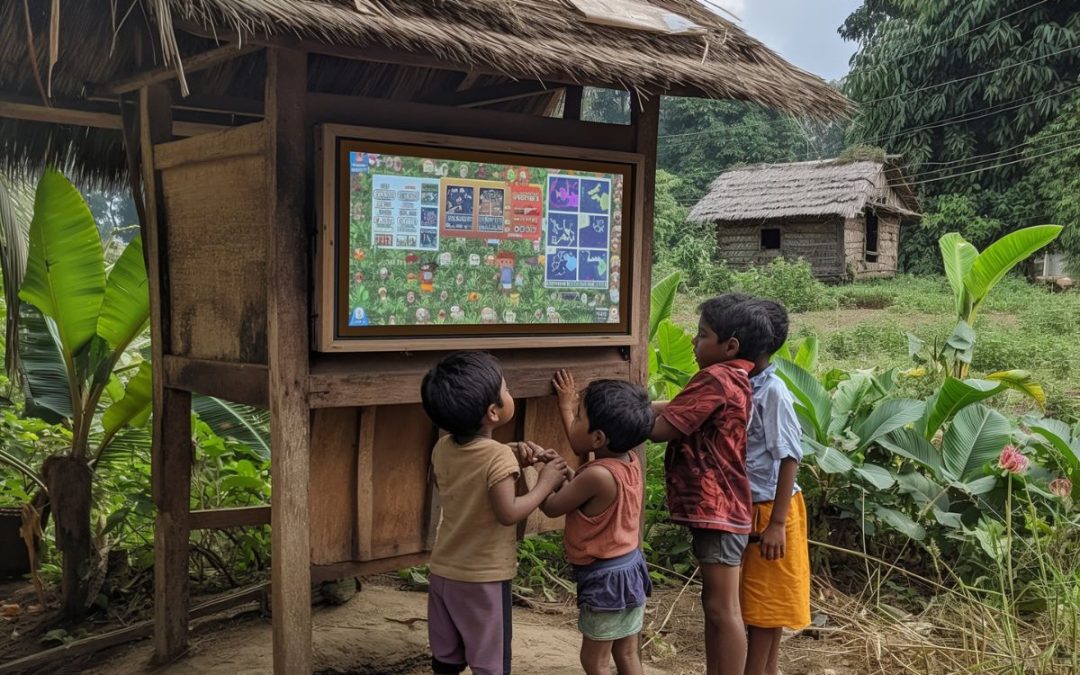In a small village in rural India, a group of children huddles around a single smartphone, their faces lit up not just by the screen, but by the thrill of discovery. They aren’t just playing a game; they’re learning how to navigate the digital world. In a place where access to the internet is sparse and digital literacy is a luxury, gaming is becoming an unexpected and powerful teacher.
As India races to bring its rural population into the digital age, traditional methods of education face numerous obstacles. Yet, within these challenges lies an innovative solution that’s catching the attention of educators and technologists alike. Could the answer to rural India’s digital divide lie in the very games that many dismiss as mere distractions? This blog explores how gaming is transforming digital literacy education in some of the most underserved parts of India, turning play into progress
The Digital Divide in Rural India
Before delving into the role of gaming, it’s crucial to understand the digital divide in rural India. Despite significant advancements in technology and internet penetration, vast swathes of rural India remain disconnected. According to a 2020 report by the Internet and Mobile Association of India (IAMAI), only about 30% of the rural population had access to the internet. This lack of connectivity hampers educational opportunities, economic growth, and access to essential services.
Digital literacy, the ability to use digital devices, communication applications, and networks to access and manage information, is a fundamental skill in today’s world. However, many rural inhabitants lack these skills due to limited exposure and resources. Bridging this gap requires innovative approaches that resonate with the rural populace, and gaming offers a promising solution
The Power of Gaming in Education
Gaming has long been recognized for its ability to engage and motivate users. Its immersive nature and interactive elements make it an effective tool for learning. When applied to digital literacy, gaming can transform what might be seen as a tedious and complex subject into an enjoyable and accessible activity.
Engagement and Motivation
Games are designed to capture attention and maintain engagement through challenges, rewards, and progress tracking. This engagement is crucial in education, where traditional methods often struggle to maintain interest. By integrating digital literacy lessons into games, learners are more likely to stay engaged and motivated.
Interactive Learning
Games offer interactive learning experiences that are more effective than passive learning methods. Players learn by doing, which helps to reinforce new skills. For instance, a game that requires players to navigate a virtual environment using a computer or mobile device can teach basic digital skills such as using a mouse, typing, or navigating a web browser.
Problem-Solving Skills
Many games are built around solving puzzles or overcoming challenges, which can enhance critical thinking and problem-solving skills. These skills are essential for digital literacy, where users must often troubleshoot issues or find information online
Initiatives Leveraging Gaming for Digital Literacy
Several initiatives and programs are harnessing the power of gaming to promote digital literacy in rural India. Here are a few notable examples:
1. Project DEFY
Project DEFY (Design Education for Yourself) is a grassroots initiative that sets up “Nooks,” or self-learning spaces, in rural areas. These Nooks are equipped with digital tools and resources, including educational games that teach basic computer skills. By encouraging self-directed learning through games, Project DEFY helps rural learners gain confidence and proficiency in using digital technologies.
2. Pratham Education Foundation
Pratham, one of India’s largest education NGOs, has developed digital content and games to enhance literacy and numeracy skills among children in rural areas. Their digital initiatives, like the “Pradigi” app, include games that teach basic digital skills in a fun and engaging way. These games are designed to be accessible and easy to use, ensuring that even those with limited prior exposure to technology can benefit.
3. Digital Empowerment Foundation (DEF)
DEF’s “SoochnaPreneur” program trains local entrepreneurs to provide digital services in their communities. Part of this training involves using educational games to teach digital literacy. These games help SoochnaPreneurs understand digital concepts and pass on their knowledge to others in their villages.
The Road Ahead
While gaming as a tool for digital literacy in rural India shows great promise, challenges remain. Access to devices and the internet is still limited in many areas, and cultural attitudes towards gaming can sometimes be a barrier. However, with continued investment and innovative approaches, these challenges can be overcome.
To truly harness the potential of gaming for digital literacy, collaboration between government bodies, NGOs, and private enterprises is essential. By working together, these stakeholders can develop and distribute educational games tailored to the needs of rural communities, ensuring that no one is left behind in the digital age.
Gaming, often viewed as mere entertainment, has the power to transform digital literacy education in rural India. By making learning fun and engaging, games can help bridge the digital divide and empower rural populations with the skills they need to thrive in a connected world. As we look to the future, embracing innovative solutions like gaming will be crucial in ensuring that the benefits of the digital revolution reach every corner of India

